Stanley Kubrick Films Ranked
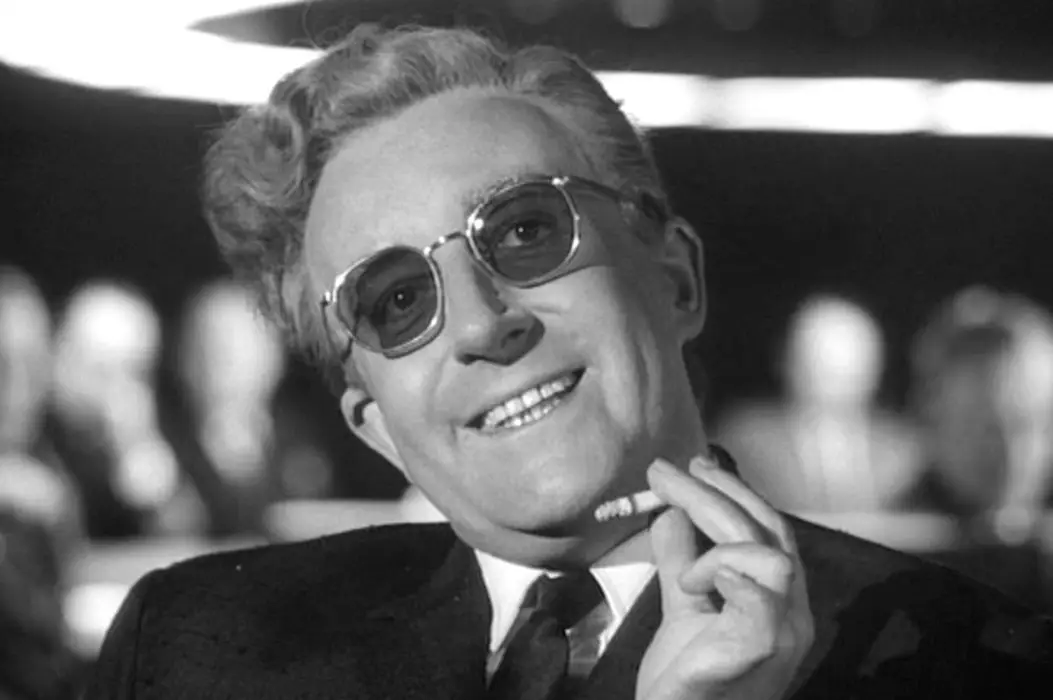
Born & raised in the Chicagoland area, I've been watching…
Stanley Kubrick is widely considered one of the greatest directors of all time, and rightfully so. His meticulous style consistently surprised audiences, and he was never afraid to go beyond expectations. He always brought unique ideas to his films and pushed the boundaries of the cinematic landscape multiple times over the course of his nearly 50-year long career in the industry. He undoubtedly fit every aspect of the definition of “auteur”, exuding such power over his craft and creating immersive, transcendent worlds for his characters to inhabit (and usually run amok within). As the 40th anniversary of The Shining nears, I thought it would be worthwhile to go through the director’s filmography from start to finish, watching all of his theatrical releases and short films in release order. In lieu of this cinematic journey I undertook, I’ve compiled a ranking of the mysterious director’s theatrical releases for your reading pleasure.
13. Fear and Desire (1953)
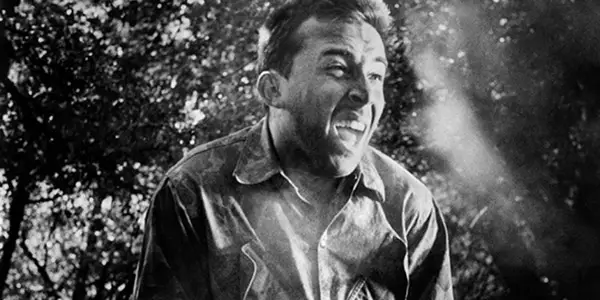
Kubrick‘s feature-length directorial debut Fear and Desire is fairly well-known as the one he notoriously attempted to keep hidden from audiences for years, and for good reason. While the film isn’t a complete failure on all levels, it’s clear from the amateurish production value and the weak script that it’s the least admirable out of all of the now-renowned director’s works. The team behind the film was relatively small and the actors weren’t given much to work with, but at least the direction is somewhat self-assured and the cinematography is nice enough to look at in points. Overall, is it very memorable when compared to the tremendous feats Kubrick accomplished in his later years? Not really, but as a key piece of the director’s history, it’s an interesting venture that was highly important in the road to his success down the line.
12. Killer’s Kiss (1955)
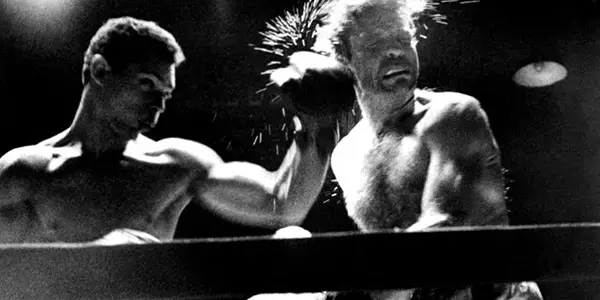
Kubrick‘s second feature-length outing came off of the heels of the failed Fear and Desire, but this was no sophomore slump. Killer’s Kiss works largely because of the intriguing narrative and sharp writing, and while it isn’t nearly the most polished of the director’s filmography, it works thanks to a strong commitment to its characters and story. It’s short, but rarely feels rushed, and the climactic final sequence is incredibly entertaining. Even more impressive is the fact that Kubrick shot and edited the feature in addition to directing it and writing the story. Killer’s Kiss was an early example of Kubrick‘s many talents behind the camera, and while it’s certainly not as well-remembered as his later works, one could argue that it deserves to be appreciated more than it is.
11. Spartacus (1960)
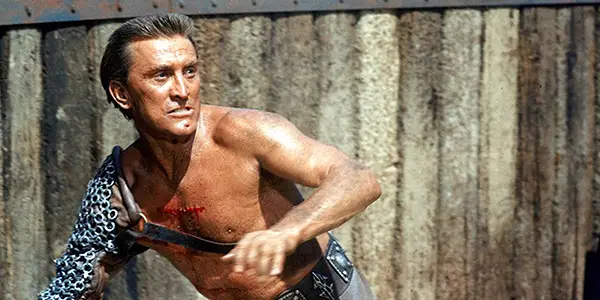
Spartacus, by normal standards, is a decent film, but by Kubrick standards, it’s an absolutely terrible one. It’s notoriously known as the only film Kubrick directed that he didn’t have complete directorial control over, and he even later admitted that he thought the script was “pretty dumb” and was “rarely faithful to what is known about Spartacus”. The film is unnecessarily long and drawn-out, ruining a cinematic epic and making it feel like an absolute chore to get through. It has plenty of great moments scattered throughout, but the 197-minute runtime feels painfully unearned and pointless. The action sequences are excellent and the movie itself is often beautiful to look at, but Spartacus mainly acts as a divider between Kubrick‘s filmography. After this, he had nowhere to go but up.
10. The Killing (1956)
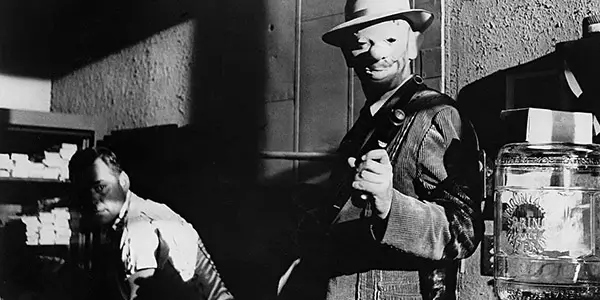
Kubrick followed up Killer’s Kiss with a straightforward heist thriller that remains one of his most entertaining works. It’s a thrilling noir feature that keeps the viewer invested with its numerous twists, all of which are simple yet still effective. Kubrick‘s earlier work will always be remembered less than his flawless final artistic ventures, but it’s honestly surprising how under-appreciated this film is. This is the point where Kubrick‘s style began to truly take form, his fluid direction matched by a commitment to the eloquent narrative. The film’s characters are undeniably some of the least interesting Kubrick ever wrote, yet the actors still bring an unrivaled charisma to the screen. The script has a lot being thrown at it and not everything sticks, but it’s still unabashedly entertaining and feels so fresh and original compared to other noir films like it.
9. Paths of Glory (1957)
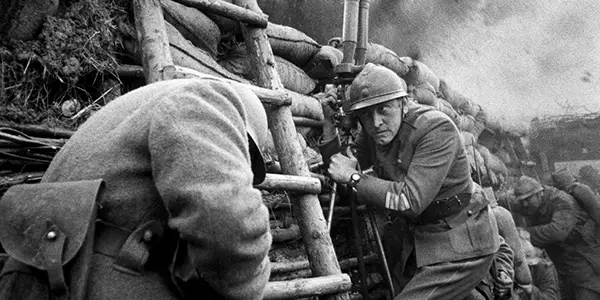
Kubrick‘s first collaboration with Kirk Douglas, Paths of Glory stars the classic Hollywood actor as an infantry commanding officer who volunteers to defend the lives of three soldiers who refuse to take part in a suicide mission. The near-perfect film contains all of the trademarks Kubrick‘s movies would soon become known for: sharp dialogue, powerful performances, impressive practical effects, and moments of hard-hitting emotional impact. It remains one of Kubrick‘s most powerful films, a truly tragic story of characters facing certain death as a result of their leaders choosing to view them as nothing more than disposable. It’s an ambitious and heavy depiction of the horrors of trench warfare and beyond, and one of the most realistic war films ever put to screen. However, it’s also injected with a dose of humanity few films like it can match, and its final moments remain some of the most memorable in Kubrick‘s filmography.
8. Lolita (1962)
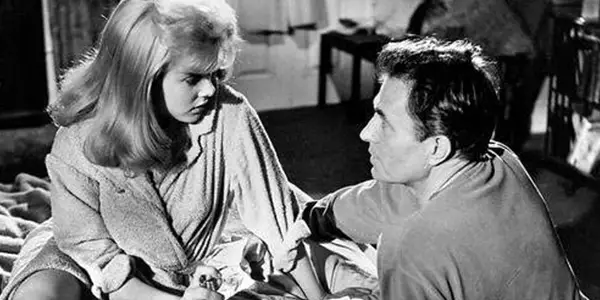
Late into his career, Kubrick remarked upon his 1962 film Lolita (based on the Vladimir Nabokov novel of the same name) that if he had known the severities of the film’s censorship battles, that he “probably wouldn’t have made the film.” Even despite his regrets about the post-production process the film went through, there’s an undeniable clarity to the director’s vision here. Adapting Nabokov‘s controversial book was always going to prove a tough task, but Kubrick made the right decision to place the ending of the book at the beginning of the film, adding a further layer of intrigue to the mystery surrounding the narrative. It’s paced incredibly well (the two and a half hours fly right by), with James Mason and Sue Lyon delivering excellent performances, and Oswald Morris‘ beautiful cinematography adding a nice polish to the film’s technicalities. One of Kubrick‘s most under-appreciated films to date.
7. Dr. Strangelove or: How I Learned to Stop Worrying and Love the Bomb (1964)
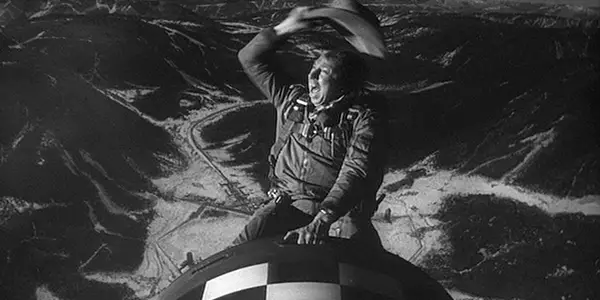
Kubrick‘s 1964 feature Dr. Strangelove or: How I Learned to Stop Worrying and Love the Bomb is a brilliant Cold War satire that still remains a hilarious and thought-provoking work over fifty years since its release. Tackling the concept of mutual assured destruction with sharp wit and brilliantly layered dialogue exchanges, he clearly had the time of his life critiquing the state of political affairs in a way that never feels stale or scatterbrained. Even more impressive is the film’s legacy and how it holds up against our current political backdrop in a way others can’t. The true standout is, of course, Peter Sellers, who delivers three perfect performances that each work towards a different success of the film’s story. This is an incredibly important film, a landmark in political satire and a true turning point for the director.
6. The Shining (1980)
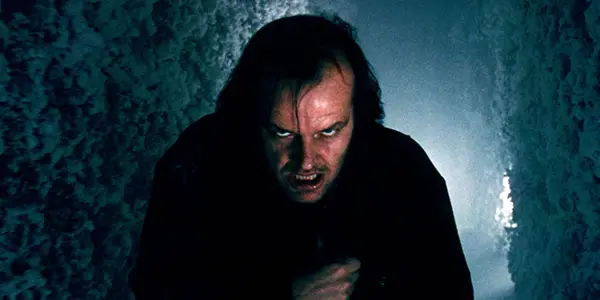
Kubrick‘s 1980 adaptation of Stephen King‘s 1977 novel The Shining is widely considered one of the director’s most popular films (if not the most popular), but King has long-considered the film a mediocre adaptation of his work. Even though King‘s complaints about Jack Torrance’s (Jack Nicholson) characterization are certainly valid, it’s hard to deny the impact that Kubrick‘s vision has had on the current scope of cinema. Whether it be the towering production design, the incredible performances, the haunting score by Wendy Carlos, or the absolute gut-wrenching fear that the narrative wraps the viewer up in (especially in its frightening final half hour), there’s so much to love about this exploration of a man’s descent into madness…but was he ever really sane to begin with? Needless to say, the themes tackled here broke new ground for the genre and the film stands the test of time as one of the most terrifying horror films ever made.
5. Full Metal Jacket (1987)
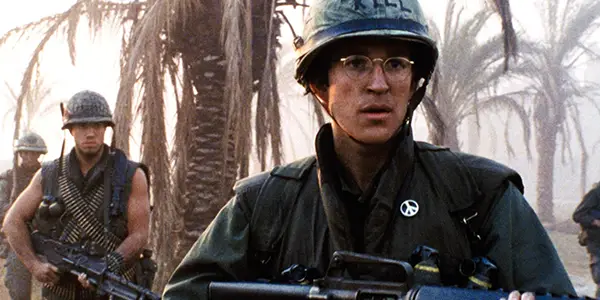
Kubrick‘s harrowing Vietnam War-set Full Metal Jacket is a bold, ambitious masterpiece. Split into two distinct halves (each as equally gripping as the other), the film follows a military private (Matthew Modine) who witnesses the impact the war has on his fellow soldiers from their brutal boot camp training to their involvement in the Battle of Huế. R. Lee Ermey‘s Gunnery Sergeant Hartman remains one of the most terrifying characters to ever grace cinema screens, a perfect representation of war’s brutality and unforgiving nature, especially when reflected in the eyes of Private Pyle (Vincent D’Onofrio, in a tragic and vulnerable performance). Both halves of the film are unique in their own way, and even though the second does drag a bit when compared to its predecessor, Kubrick was ultimately successful in his attempt at showing the effects that war has on soldiers’ psyches throughout both. Full Metal Jacket remains one of the most haunting films of the past fifty years, a terrifying statement on the harsh realities of war.
4. Barry Lyndon (1975)
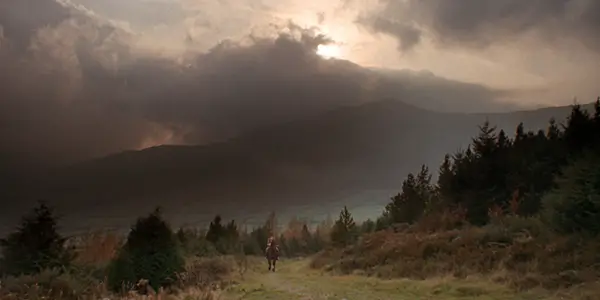
Barry Lyndon is essentially an 18th Century fairytale. Charting the story of an Irish man named Redmond Barry (played to perfection by Ryan O’Neal), the story follows Barry as through multiple decades from his humble beginnings as a young rogue to eventually assuming an aristocratic position after marrying a wealthy widow. Even though the film is over three hours long, it doesn’t feel overly drawn out or pretentious in regards to its runtime. The pacing is utilized perfectly, taking the viewer on an unforgettable journey through different countries, wars, and relationships Barry develops over time. John Alcott‘s cinematography is undeniably some of the greatest of all time, capturing every fine detail of the landscapes and costumes with unmatched elegance and beauty. Barry Lyndon is undeniably one of Kubrick‘s greatest achievements on both a technical and narrative level, a masterpiece on all fronts and an emotional glimpse into a world and characters that the viewer can relate to, despite their numerous flaws.
3. 2001: A Space Odyssey (1968)
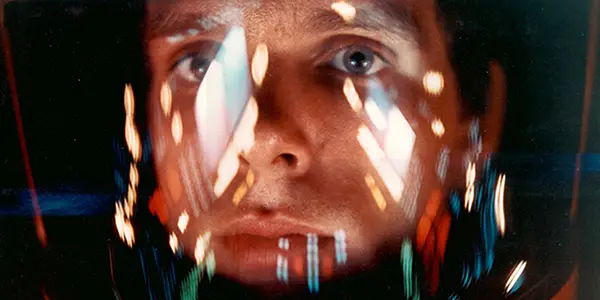
As one who’s seen all of Kubrick‘s work can probably assume, it’s incredibly hard to rank his late period of films. They’re all masterpieces in their own right, boundary-pushing advancements in narrative storytelling and cinematic structure that marked a turning point for the film medium in the back half of the 20th century. 2001: A Space Odyssey is easily the best and brightest example of pure unbridled storytelling, a vibrant epic that never fails to accomplish what it sets out to do. It undertakes the viewer with a sweeping grandness unmatched by modern science-fiction, delivering a transcendent experience unlike any other. Not only was it incredibly innovative for its time, but many recent attempts at replicating its strength have proven futile, as nothing can possibly hold a candle to this masterwork. Maybe I’m personally a bit biased because my first viewing was in IMAX, but the runtime feels completely deserved and the film’s pacing flows incredibly smoothly. To this day, there is not a single film like 2001: A Space Odyssey. It’s truly a flawless work of art on every possible level, narratively and technically.
2. A Clockwork Orange (1971)
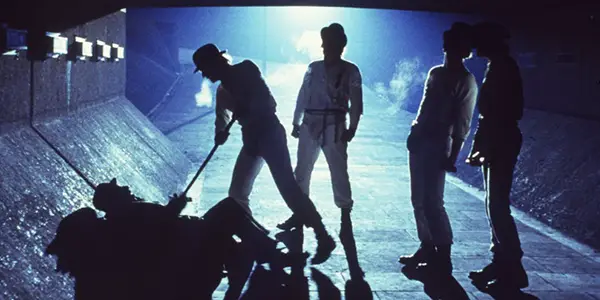
Kubrick followed up 2001 with A Clockwork Orange, an adaptation of Anthony Burgess‘ controversial 1962 novel of the same name. Throughout his filmmaking career, Kubrick faced many battles with censorship guidelines, but his battle over A Clockwork Orange might have been the worst of them all. It was originally given an X rating in the U.S., and was later withdrawn by Kubrick in Britain after multiple criminal cases suggested that the film was the inspiration for them. Despite these occurrences, Kubrick‘s fantastic dystopian vision holds up as a surreal masterwork that questions the nature of human choice, and whether stripping someone away of their right to choose between good and bad is immoral. The character of Alex (imbued with all the malicious charm possible by a perfect Malcolm McDowell) is one of cinema’s great villains, a triumphant amalgamation of pure evil that the viewer is made to feel sympathy for in the second half before he’s “cured” and goes back to his old ways at the end. It’s a testament to Kubrick‘s storytelling prowess and his unwavering commitment to making the audience feel completely immersed in his worlds and characters.
1. Eyes Wide Shut (1999)
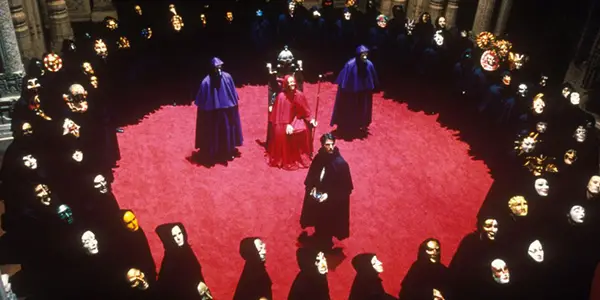
Eyes Wide Shut, Kubrick‘s final cinematic offering before his death was given a mixed reception upon initial release (despite being considered by Kubrick himself his best work) but has since gone on to find more deserved acclaim in the twenty years since then. Adapted from Arthur Schnitzler‘s Traumnovelle, the film follows a doctor (Tom Cruise) who embarks on a night-long journey of moral discovery after his wife (Nicole Kidman) reveals a painful secret to him. Kubrick switched out early 1900s Vienna for 1990s New York City flawlessly, transforming the city’s nightscape into a dark, seedy underworld, making a statement on class division in the process. It also balances the theme of marriage and secrecy, as evidenced by Kubrick‘s way of following his leads’ conversations about their dreams and fantasies, ultimately hoping to convey to the viewer that maybe secrets are best left untold. The film undoubtedly feels like a culmination of all of Kubrick’s prior works, a grand artistic provocation that seems like it was almost meant to be his final film, but at least Kubrick went out on his strongest note possible.
What do you consider the best Stanley Kubrick film? Let us know in the comments.
Does content like this matter to you?
Become a Member and support film journalism. Unlock access to all of Film Inquiry`s great articles. Join a community of like-minded readers who are passionate about cinema - get access to our private members Network, give back to independent filmmakers, and more.
Born & raised in the Chicagoland area, I've been watching films for as long as I can remember.












